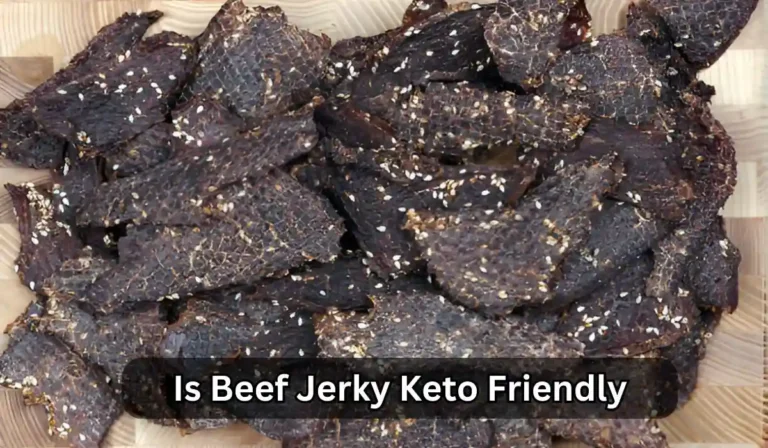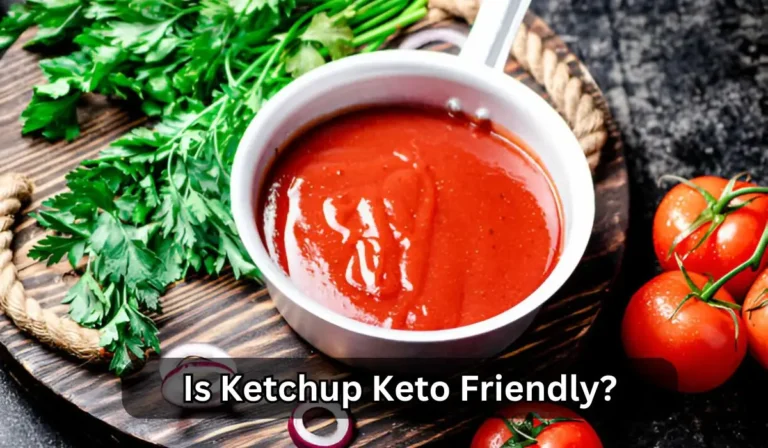Is Sugar Free Pudding Keto Friendly? Exploring Its Compatibility with a Low-Carb Diet
Sugar-free pudding can be a tempting treat for those following a keto diet. It can be keto-friendly, but not all brands are created equal, so you need to check the ingredients carefully. Understanding the composition of different sugar-free puddings will help you stay within your carb limits while satisfying your sweet cravings.

When evaluating sugar-free pudding, be aware of the carbs hidden in thickeners and other additives. You can also make your own using keto-approved ingredients, which offers a healthier alternative. This can be an enjoyable way to incorporate sweet treats without straying from your diet goals.
By learning how to navigate your options, you can indulge in desserts while sticking to your keto lifestyle. Sugar-free pudding can offer a satisfying option, but being informed is key to making the best choice for your needs.
Key Takeaways
- Sugar-free pudding can fit into a keto diet if chosen wisely.
- Check ingredient labels for hidden carbs and additives.
- Homemade versions provide better control over ingredients.
Understanding Ketosis and the Keto Diet
The ketogenic diet focuses on changing how your body generates energy. By significantly decreasing carbohydrate intake, your body enters a state called ketosis, where it burns fat for fuel instead of carbohydrates.
The Role of Carbohydrates in Ketosis
Carbohydrates are the primary source of energy for the body. When you consume them, your body converts them into glucose. In a standard diet, glucose provides energy, but this process does not support ketosis.
To achieve ketosis, your daily carb intake must drop significantly, typically to around 20 to 50 grams. This reduction forces your body to find alternative energy sources. The shift to burning fat results in the production of ketones, which serve as an efficient alternative fuel.
Maintaining a low carbohydrate intake is crucial. Even small amounts can disrupt ketosis, preventing your body from reaching its optimal fat-burning state.
Macronutrient Composition of a Keto Diet
A successful keto diet is generally composed of high fats, moderate proteins, and very low carbohydrates. Here’s a typical macronutrient breakdown:
- Fats: 70-80% of total daily calories
- Protein: 15-25% of total daily calories
- Carbohydrates: 5-10% of total daily calories
This balance helps your body use fats for energy while providing enough protein to maintain muscle mass.
Healthy fat sources include avocados, nuts, and olive oil. Protein sources should be lean, such as chicken, fish, and eggs.
Selecting the right macronutrients is essential for sustaining ketosis and enhancing your weight loss and health goals.
Composition of Sugar-Free Pudding
When considering sugar-free pudding, it’s important to understand its composition. This includes the common ingredients used and the sweeteners that make it a low-carb option.
Common Ingredients in Sugar-Free Pudding
Sugar-free pudding typically contains several key ingredients. The base is often made from milk or cream, which provides a creamy texture. You may also find gelatin or thickening agents like cornstarch, though they can vary by brand.
Another common ingredient is flavoring, which can include natural or artificial extracts such as vanilla or chocolate. These flavors enhance the dessert’s appeal while keeping it low in sugar.
It’s essential to check labels for filler ingredients as well. Some brands might add unnecessary starches or fillers that can increase carb counts. Choose puddings with minimal and recognizable ingredients to stick to your dietary goals.
Sweeteners Used in Sugar-Free Pudding
Sweeteners play a crucial role in sugar-free pudding’s appeal. Many brands use artificial sweeteners like aspartame, sucralose, or saccharin. These alternatives provide sweetness without added calories or carbs.
Natural sweeteners such as stevia or erythritol are also popular choices. They are often favored for their lower glycemic index, making them suitable for those on a keto diet.
It’s important to consider your personal preferences regarding sweeteners. Some individuals may experience digestive discomfort from certain sugar alcohols. Always read the ingredient list to ensure the sweeteners align with your dietary needs and preferences.
Evaluating the Keto-Friendliness of Foods
When considering whether a food fits into a ketogenic diet, checking its net carbs and glycemic index is essential. These factors help you determine if a food will affect your ketosis.
Calculating Net Carbs
Net carbs are vital for anyone on a keto diet. To calculate net carbs, subtract fiber and certain sugar alcohols from the total carbohydrates.
Net Carbs Formula:
Net Carbs = Total Carbs – Fiber – Sugar Alcohols (if applicable)
Many sugar-free pudding options have low total carbs. For instance, a serving might show 5 grams of total carbs, with 2 grams of fiber. This means the net carbs would be 3 grams.
Keep in mind that the specific ingredients can affect this count. Always check labels to confirm the net carb content aligns with your dietary goals.
Understanding Glycemic Index
The glycemic index (GI) measures how foods impact blood sugar levels. Foods with a low GI release glucose slowly, which is essential on a keto diet.
Sugar-free puddings generally have a low GI, making them suitable for keeping insulin levels stable. Ingredients like artificial sweeteners can be low on the GI scale.
For reference, foods with a GI under 55 are considered low. Examples include:
- Non-starchy vegetables
- Whole grains
- Most sugar-free products
Selecting foods with low GI helps you maintain ketosis while enjoying a variety of flavors. Always check labels to ensure that the pudding remains low in sugar content to support your keto journey.
Health Considerations of Sugar Substitutes
When choosing sugar substitutes, it’s important to consider how they impact your body. Different substitutes can have varying effects on blood sugar levels and long-term health. Understanding these factors can help you make informed dietary choices.
Impact on Blood Sugar Levels
Sugar substitutes can affect your blood sugar in different ways. Some, like stevia and erythritol, do not raise blood sugar levels at all. This makes them a popular choice for those on a keto diet.
Others, such as agave nectar, may have a lower glycemic index than regular sugar but can still spike blood glucose. Regular monitoring is essential if you have diabetes or blood sugar concerns.
In general:
- Stevia: Zero calories, zero impact.
- Erythritol: Low-calorie and minimal blood sugar effect.
- Agave Nectar: Low glycemic but can still affect sugar levels.
Choosing the right substitute can help you maintain stable blood sugar levels while enjoying sweet flavors.
Long-Term Health Effects
The long-term health effects of sugar substitutes vary based on the type used. Most artificial sweeteners, like aspartame or sucralose, are generally recognized as safe by health organizations. However, some studies suggest potential health risks.
Natural options, such as monk fruit and stevia, often have fewer concerns related to long-term use. They can help maintain a balanced diet without added sugars.
Consider the following points:
- Artificial Sweeteners: Possible links to weight gain and metabolic issues.
- Natural Sweeteners: Generally safer, with anti-inflammatory properties.
It’s crucial to stay informed and choose substitutes that fit your health goals. Regularly evaluate your choices to ensure they align with your long-term well-being.
Practical Tips for Including Sugar-Free Pudding in a Keto Diet
Including sugar-free pudding in your keto diet can be enjoyable and straightforward. You can make it a part of your meals while ensuring you stay within your carb limits.
Portion Control and Frequency
When enjoying sugar-free pudding, portion control is key. Aim for serving sizes that fit into your daily carb allowance. Many sugar-free puddings contain about 8 grams of net carbs per serving. Keep track of this by checking the nutrition label.
It’s wise to treat sugar-free pudding as an occasional dessert rather than a daily staple. Limiting your intake to a few times a week helps avoid unintended carb spikes. You can also mix it with other keto-friendly ingredients, like heavy whipping cream, to enhance flavor and texture while keeping net carbs low.
Incorporating Nutrient-Rich Keto Foods
Enhance the nutritional value of your sugar-free pudding by pairing it with other keto-friendly foods. For example, adding nuts or seeds can provide healthy fats and protein. A sprinkle of chia seeds not only adds texture but boosts fiber content.
Consider topping your pudding with berries like raspberries or blackberries, as they are low in carbs. This combination can make your dessert more satisfying and nutritious. Experimenting with flavors by adding almond extract or cinnamon can also make your puddings more enjoyable without adding extra sugar.
FAQS About Is Suger Free Pudding Keto Friendly
When considering sugar-free pudding on a ketogenic diet, you may have specific questions about its compatibility, nutritional content, and alternative ingredients. Here are some common inquiries that can help clarify your doubts.
Can I consume sugar-free Jello pudding on a ketogenic diet?
Yes, sugar-free Jello pudding can fit into a ketogenic diet. It typically contains low carbohydrates and no sugar, making it a suitable choice for those aiming to maintain ketosis. Always check the label to confirm its carb content.
How many carbohydrates are in a sugar-free snack pudding?
Sugar-free snack pudding usually contains about 1 to 5 grams of carbohydrates per serving. The exact amount varies by brand and specific product, so it’s important to read the nutritional label for details.
Are sugar-free food items generally acceptable for a keto diet?
Many sugar-free food items can be acceptable for a keto diet, depending on their ingredients. Look for products with low net carbs and no added sugars. Be mindful of any fillers or preservatives that could impact your blood sugar levels.
What alternative ingredients are used in sugar-free pudding?
Sugar-free pudding often uses artificial sweeteners or sugar substitutes like erythritol or stevia. These ingredients help to maintain sweetness without adding carbohydrates, making them suitable for a low-carb diet.
Are there keto-friendly pudding recipes that use sugar substitutes?
Yes, many keto-friendly pudding recipes utilize sugar substitutes. Common ingredients include heavy cream, cream cheese, and unsweetened cocoa powder, combined with sweeteners to create a rich and satisfying dessert.
What is the nutritional content of sugar-free pudding mixes marketed as keto-friendly?
Sugar-free pudding mixes that are marketed as keto-friendly generally contain minimal carbohydrates, typically less than 5 grams per serving. They are often low in calories and free from sugars, making them appealing for those on a ketogenic diet. Always review the nutrition label for accurate information.








